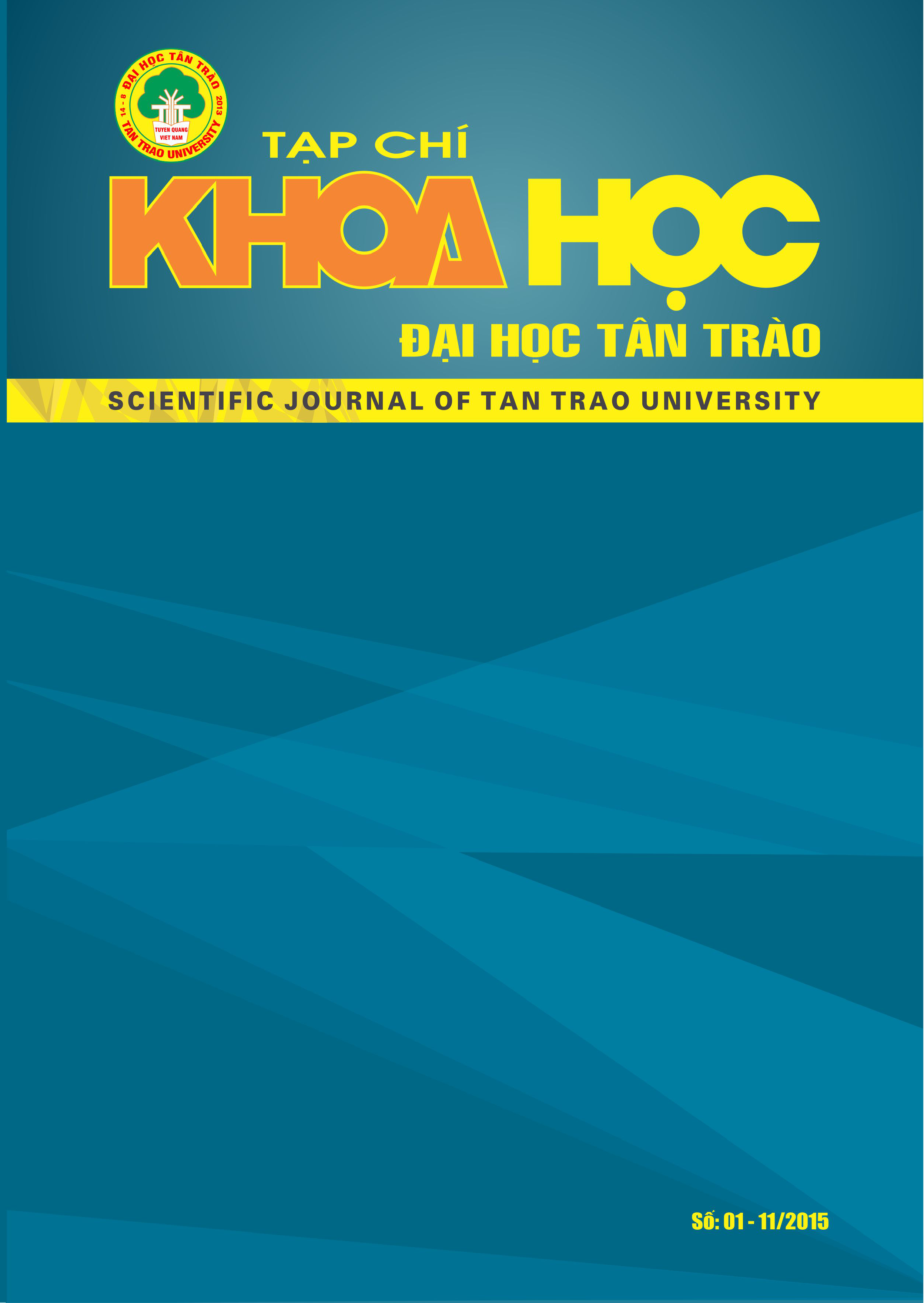Influences of Nom script on ancient Choang script
DOI:
https://doi.org/10.51453/2354-1431/2015/78Keywords:
Influences, Nom script, Choang script, Tay scripts, Nung scriptsAbstract
In ancient Choang script, there is a number of scripts, that were influenced in terms of autography, phonetic, meaning and aspect of symbol, were created from Vietnamese Nom scripts. These influences were transacted through intermediary environment from ancient Tay and ancient Nung scripts of Vietnam to form.
Downloads
References
1. Nhóm chỉ đạo chỉnh lý thư tịch cổ Dân tộc thiểu số khu Tự trị Dân tộc Choang Quảng Tây chủ biên (1989), Tự điển chữ Choang cổ, Nxb Dân tộc Quảng Tây.
2. Lý Lạc Nghị (1987), “Nghiên cứu so sánh chữ Choang vuông với chữ Nôm”, Tạp chí Ngữ văn Dân tộc, số 4.
3. La Trường Sơn (1992), “Nghiên cứu so sánh chữ Choang vuông với chữ Nôm”, Tạp chí Dọc ngang Đông Nam Á, số 3.
4. Đàm Hiểu Hàng (2010), Nghiên cứu chữ Choang vuông, Nxb Dân tộc.
5. Vương Phong (2003), Từ chữ Hán đến hệ thống văn tự chữ Hán – nghiên cứu nôi văn tự của chữ Hán, Nxb Dân tộc.
6. Vương Lực (1980), Nghiên cứu từ Hán Việt, trong bộ Long trùng tịnh điêu trai văn tập, quyển 2, Trung Hoa thư cục.
7. Trương Quân Như, Lương Mẫn (1999), Nghiên cứu phương ngữ tiếng Choang, Nxb Tứ Xuyên.
8. Hoàng Triều Ân - chủ biên (2003), Tự điển chữ Nôm Tày, Nxb Khoa học xã hội, Hà Nội.
9. Nguyễn Quang Hồng (2008), Khái luận văn tự học chữ Nôm, Nxb Giáo dục, Hà Nội.
10. Nguyễn Văn Huyên (1941), Tổng hợp danh mục các điệu hát trong lễ cưới của dân tộc Tày, Nùng ở Lạng Sơn, Cao Bằng, Viện Viễn Đông Bác cổ.
11. Trương Đình Tín (2003), Bảng phiên âm Nôm Việt, Nxb Thuận Hóa.
Downloads
Published
How to Cite
Issue
Section
License

This work is licensed under a Creative Commons Attribution-ShareAlike 4.0 International License.
All articles published in SJTTU are licensed under a Creative Commons Attribution-ShareAlike 4.0 International (CC BY-SA) license. This means anyone is free to copy, transform, or redistribute articles for any lawful purpose in any medium, provided they give appropriate attribution to the original author(s) and SJTTU, link to the license, indicate if changes were made, and redistribute any derivative work under the same license.
Copyright on articles is retained by the respective author(s), without restrictions. A non-exclusive license is granted to SJTTU to publish the article and identify itself as its original publisher, along with the commercial right to include the article in a hardcopy issue for sale to libraries and individuals.
Although the conditions of the CC BY-SA license don't apply to authors (as the copyright holder of your article, you have no restrictions on your rights), by submitting to SJTTU, authors recognize the rights of readers, and must grant any third party the right to use their article to the extent provided by the license.


